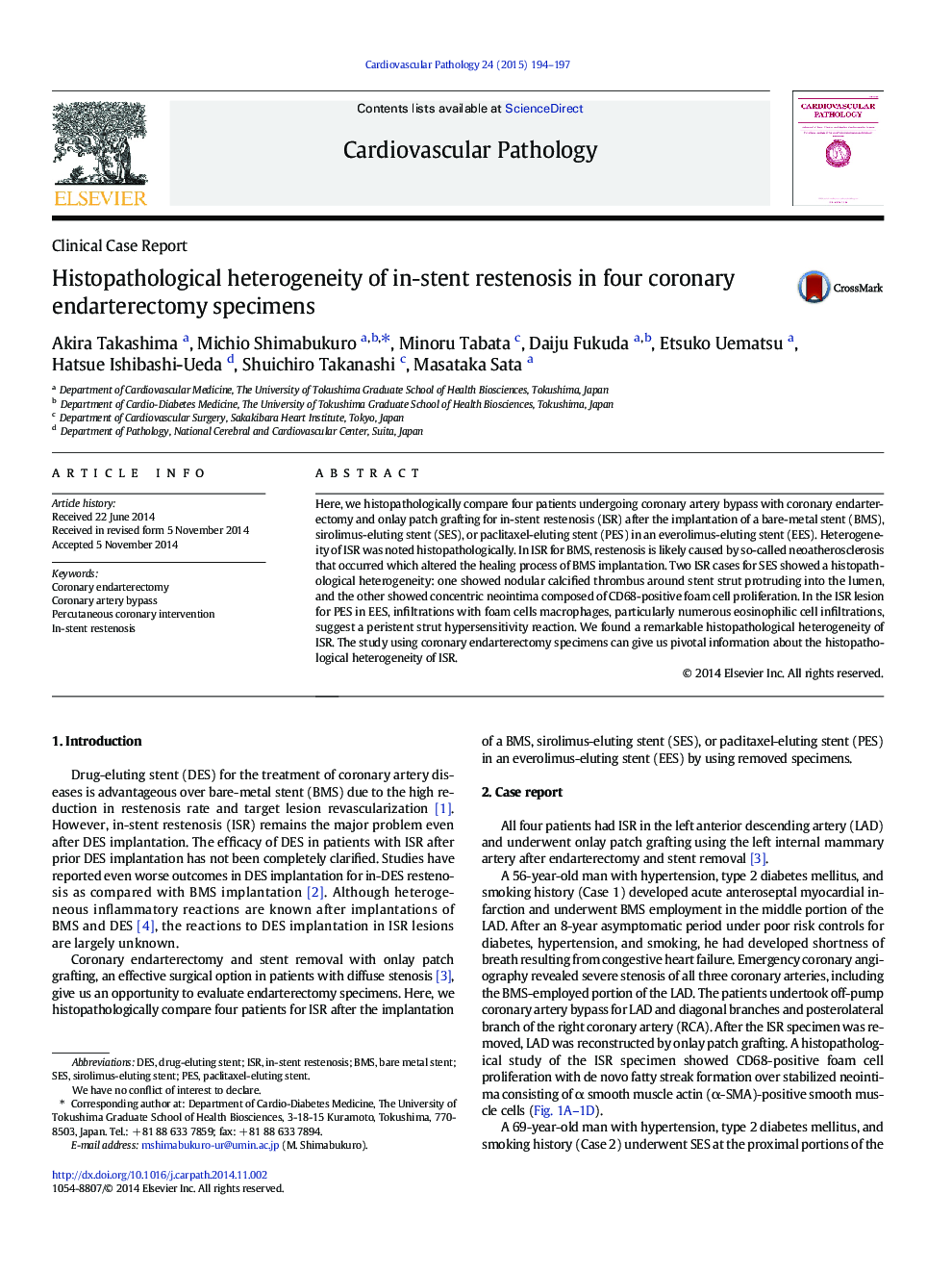| Article ID | Journal | Published Year | Pages | File Type |
|---|---|---|---|---|
| 5951870 | Cardiovascular Pathology | 2015 | 4 Pages |
Here, we histopathologically compare four patients undergoing coronary artery bypass with coronary endarterectomy and onlay patch grafting for in-stent restenosis (ISR) after the implantation of a bare-metal stent (BMS), sirolimus-eluting stent (SES), or paclitaxel-eluting stent (PES) in an everolimus-eluting stent (EES). Heterogeneity of ISR was noted histopathologically. In ISR for BMS, restenosis is likely caused by so-called neoatherosclerosis that occurred which altered the healing process of BMS implantation. Two ISR cases for SES showed a histopathological heterogeneity: one showed nodular calcified thrombus around stent strut protruding into the lumen, and the other showed concentric neointima composed of CD68-positive foam cell proliferation. In the ISR lesion for PES in EES, infiltrations with foam cells macrophages, particularly numerous eosinophilic cell infiltrations, suggest a peristent strut hypersensitivity reaction. We found a remarkable histopathological heterogeneity of ISR. The study using coronary endarterectomy specimens can give us pivotal information about the histopathological heterogeneity of ISR.
